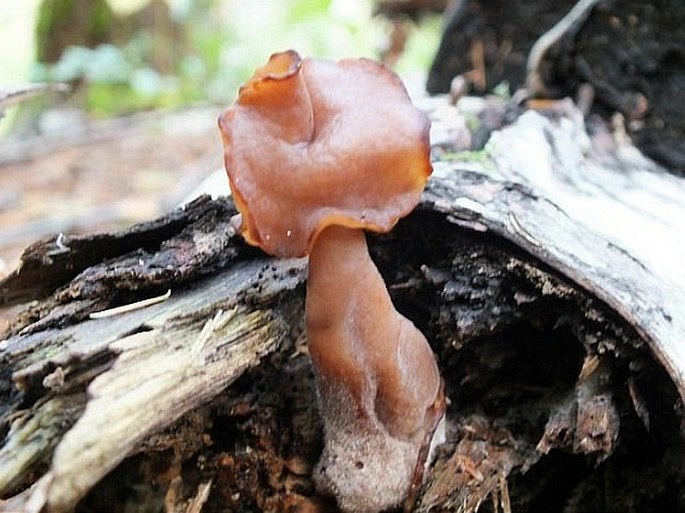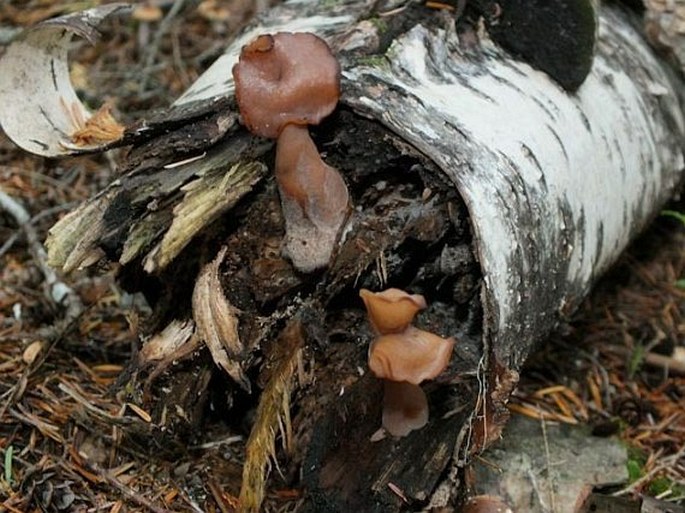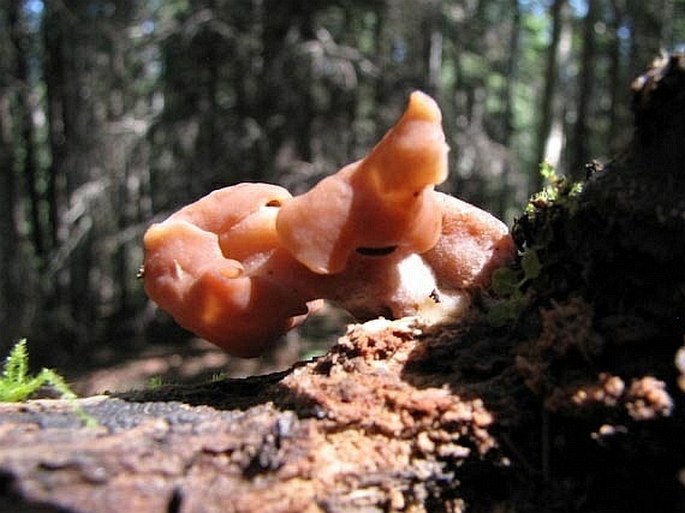Syn.: Helvella friesiana Cooke, Helvella infula Schaeff., Helvella rhodopus Krombh., Physomitra infula (Schaeff.) Boud.
Family: Discinaceae Benedix

Distribution: Found in Europe, Asia and America.
Ecology: Solitary to gregarious in coniferous and mixed forests, on rotting wood, also on soil, humus, in burnt areas. Fruiting bodies appear from September to November. In coastal California it fruits in winter and spring.
Description: Body 5–15 cm tall, 5–10 wide, head mitre-shaped, irregularly lobed with folds, at maturity 2–3(–4) lobes, sometimes saddle-shaped, ochre to dark brown. Sterile surface paler, interior hollow or chambered. Stalk up to 12 cm long, equal or tapering upward, smooth or grooved, paler than head or whitish often with purplish tinge. Spores colourless.
Usage: In North America considered poisonous as it contains MMH (monomethylhydrazine – gyromitrine) which could be neutralized by cooking, however, nobody can predict the safe dose of MMH. Never eat it raw.



These images were taken in Canada, British Columbia, Burton (September 2013).


